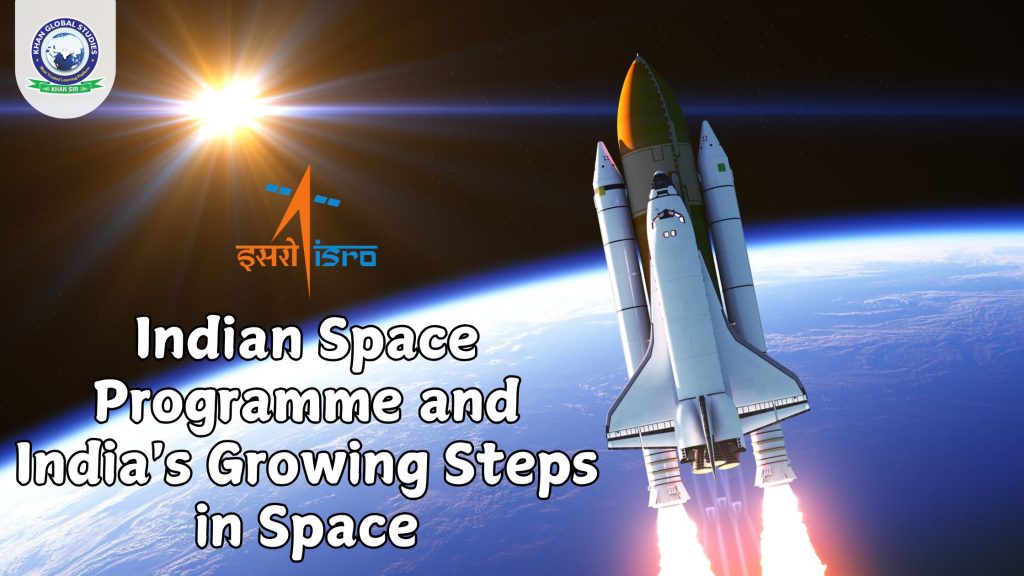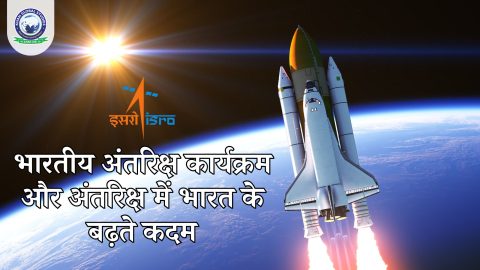India has made significant progress in space exploration, which has demonstrated its capabilities on the global stage. Led by the Indian Space Research Organisation (ISRO), India has emerged as a major player in the field of space technology. ISRO’s remarkable achievements have put India among the leading nations in space exploration, cementing its reputation as a force to reckon with.
The Beginning of India’s Space Program
The foundation of India’s space program was laid in the 1960s. However, in the 21st century, ISRO has made several giant leaps in space technology and exploration. India’s journey in space exploration began with small steps, but in the last few years, it has made huge strides that have had a profound impact on global space science.
Aryabhatta: India’s First Satellite (1975)
India launched its first satellite, Aryabhatta, on April 19, 1975. It was a historic moment for the country as it joined the ranks of countries that were able to launch their satellites into space. The launch of Aryabhata paved the way for India’s future efforts in space research and exploration, ushering in a new era for India in space science.
Major Space Missions of India
India’s space program has witnessed many milestones, each of which has contributed to the country’s growing reputation in space exploration. Some of the most important missions include:
Chandrayaan-1: India’s First Lunar Mission (2008)
In 2008, India launched its first lunar mission, Chandrayaan-1, which provided conclusive evidence of water on the Moon. The discovery was unprecedented and established India as a significant contributor to global lunar research. Chandrayaan-1’s success was followed by another mission, Chandrayaan-2, launched in 2019, which aimed to soft-land on the lunar surface. Although the lander did not succeed, the mission still provided valuable information, demonstrating India’s resilience and technological expertise. The most recent in this series, Chandrayaan-3, was launched on July 14, 2023, continuing India’s quest to explore the Moon.
Mangalyaan Mission: Reaching Mars (2014)
In 2014, India became the first country to successfully send a spacecraft into Mars orbit in its very first attempt with the Mangalyaan Mission. This mission was a testament to ISRO’s ability to deliver high-performance space missions at a fraction of the cost associated with such attempts. Mangalyaan’s success highlighted India’s growing technological capabilities and its potential to make significant contributions to space research.
Gaganyaan: India’s First Human Spaceflight (Planned for 2025)
India is preparing for its first human space mission, Gaganyaan, scheduled for 2025. This mission will prove to be a major milestone in India’s space program as Indian astronauts, or vyomanauts will be sent into space for the first time. Gaganyaan represents India’s ambition to become a significant player in human space exploration, further expanding its technological and scientific capabilities.
NAVIC: India’s Indigenous Navigation System (2016)
India has developed its own satellite-based navigation system known as NAVIC (Navigation with Indian Constellation), which was officially launched in 2016. NAVIC provides accurate positioning services similar to the US GPS system in India and the surrounding region. The system has wide applications, especially in defence, transportation and emergency services, enhancing India’s strategic autonomy in the space sector.
PSLV and GSLV: India’s Launch Vehicle Success
ISRO has made significant progress in the development of launch vehicle technology, with the Polar Satellite Launch Vehicle (PSLV) and Geosynchronous Satellite Launch Vehicle (GSLV) being at the forefront of India’s launch capabilities. PSLV, often called the “workhorse” of ISRO, has successfully launched many satellites, including the notable feat of launching 104 satellites in a single mission in 2017, which set a world record. Meanwhile, India’s heaviest launcher GSLV Mark III plays a vital role in launching heavy satellites and is expected to play a key role in future manned missions like Gaganyaan.
Private Sector Participation in India’s Space Program
In recent years, the Indian space program has seen an increase in the participation of private companies. The government has encouraged the private sector to develop satellites, provide launch services, and participate in space research. The move is aimed at promoting competition and innovation, making India’s space sector more dynamic and competitive globally.
Spearheading New Space Partnerships and Collaborations
India’s space program is not just about national achievements; it also plays a key role in international collaborations. ISRO has collaborated with several countries and space agencies for joint missions, satellite launches, and research initiatives. Through these collaborations, India has emerged as a reliable partner in the global space community.
Aditya-L1: India’s First Solar Mission (Planned for 2024)
India is preparing to launch its first solar mission, Aditya-L1, in 2024. The mission is designed to study the Sun, focusing on the outermost layer, known as the corona. By better understanding solar phenomena, India aims to contribute to the global understanding of how solar activity affects space weather and its impact on Earth.
Sriharikota: India’s Launch Centre of Excellence
India’s primary space centre, the Satish Dhawan Space Centre (SDSC), located in Sriharikota, has been the launch site for many of India’s major space missions. It plays a vital role in launching not only Indian satellites but also satellites of other countries, strengthening India’s position as a space-faring nation with a global reach.
Future Plans and Vision for Space Exploration
India’s ambitions in space exploration extend far beyond its current achievements. Plans include further lunar exploration missions, continued Mars exploration, and even missions to Venus. India’s space Program is constantly evolving, and it is set to play a central role in shaping the future of space exploration globally.
India’s Space Policy and Global Impact
India’s space achievements are not only a matter of national pride but also of global significance. India has promoted international collaboration and partnerships in space research through its space policy. India’s space program is an inspiration to many developing countries, demonstrating how technological and scientific excellence can be achieved with limited resources and a focused approach.
Conclusion
India’s space achievements under the leadership of ISRO are a testimony to the country’s scientific and technological capabilities. From launching the first satellite Aryabhata to planning manned space missions like Gaganyaan, India has proven its capability in space exploration. ISRO’s low-cost, high-efficiency approach has set global benchmarks, and upcoming missions will further strengthen India’s position in the space race. As India continues to innovate and collaborate internationally, its space Program is poised for even greater achievements in the years to come.





